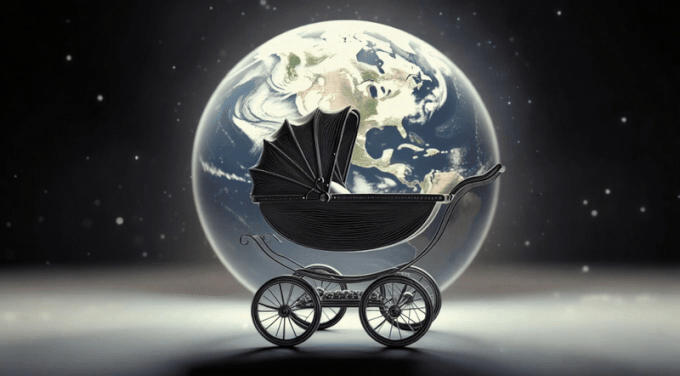Summary: For decades, experts assumed that rising prosperity inevitably led to falling birth rates, fueling concerns about population collapse in wealthy societies. But new data show that this link is weakening or even reversing, with many high-income countries now seeing higher fertility than some middle-income nations. As research reveals that wealth and fertility can rise together, policymakers have an opportunity to rethink outdated assumptions about tradeoffs between prosperity and demographic decline.
For years, it was treated as a demographic law: as countries grow wealthier, they have fewer children. Prosperity, it was believed, inevitably drove birth rates down. This assumption shaped countless forecasts about the future of the global population.
And in many wealthy countries, such as South Korea and Italy, very low fertility rates persist. But a growing body of research is challenging the idea that rising prosperity always suppresses fertility.
University of Pennsylvania economist Jesús Fernández-Villaverde recently observed that middle-income countries are now experiencing lower total fertility rates than many advanced economies ever have. His latest work shows that Thailand and Colombia each have fertility rates around 1.0 births per woman, which is even lower than rates in well-known low-fertility advanced economies such as Japan, Spain and Italy.
“My conjecture is that by 2060 or so, we might see rich economies as a group with higher [total fertility rates] than emerging economies,” Fernández-Villaverde predicts.
This changing relationship between prosperity and fertility is already apparent in Europe. For many years, wealthier European countries tended to have lower birth rates than poorer ones. That pattern weakened around 2017, and by 2021 it had flipped.
This change fits a broader historical pattern. Before the Industrial Revolution, wealthier families generally had more children. The idea that prosperity leads to smaller families is a modern development. Now, in many advanced economies, that trend is weakening or reversing. The way that prosperity influences fertility is changing yet again. Wealth and family size are no longer pulling in opposite directions.
This shift also calls into question long-standing assumptions about women’s income and fertility. For years, many economists thought that higher salaries discouraged women from having children by raising the opportunity cost of taking time off work. That no longer seems to hold in many countries.
In several high-income nations, rising female earnings are now associated with higher fertility. Studies in Italy and the Netherlands show that couples where both partners earn well are more likely to have children, while low-income couples are the least likely to do so. Similar findings have emerged from Sweden as well. In Norway, too, higher-earning women now tend to have more babies.
This trend is not limited to Europe. In the United States, richer families are also beginning to have more babies than poorer ones, reversing patterns observed in previous decades. A study of seven countries — including the United States, the United Kingdom, Germany and Australia — found that in every case, higher incomes for both men and women increased the chances of having a child.
This growing body of evidence challenges the assumption that prosperity causes people to have fewer children.
Still, birth rates are falling across much of the world, with many countries now below replacement level. While this trend raises serious concerns, such as the risk of an aging and less innovative population and widening gaps in public pension solvency, it is heartening that it is not driven by prosperity itself. Wealth does not automatically lead to fewer children, and theories blaming consumerism or rising living standards no longer hold up.
Although the recent shift in the relationship between prosperity and fertility is welcome, it is not yet enough to raise fertility to the replacement rate of around 2.1 children per woman — a challenging threshold to reach.
But the growing number of policymakers around the world concerned about falling fertility can consider many simple, freedom-enhancing reforms that lower barriers to raising a family, including reforms to education, housing and childcare. Still, it’s important to challenge the common assumption that prosperity inevitably leads to lower birth rates: Wealth does not always mean fewer children.
This article was published at The Hill on 6/16/2025.

